Having grown up with hibiscus flowers, usually bight red with the long pistil reaching for the sun with yellow covered stamens prominently displayed and so familiar, I was captivated when I first found hibiscus seed oil from one of my suppliers.
It felt strangely unifying to marry my early love of the hibiscus flower with my later work on the lipid oils.
Hibiscus seed oil is a special oil too. It is a delicate and lovely carrier oil, and it is a powerful lipid on its own as a facial oil.
Fatty Acid Profile
Hibiscus seed oil is high in linoleic acid. Here’s a breakdown of the fatty acid profile below.
(40%) linoleic acid
(28%) oleic acid
(20%) palmitic acid
(5.3%) Stearic acid
(1.7%) unusual cis -10-Nonadecenoic acid, or Sterculic Acid
Feel, Color & Scent
Hibiscus seed has a golden yellow color, and as with most oils I’ve worked with, the color varies slightly depending on the source and level of refinement.
Below are two hibiscus seed oils from two different suppliers. One is just slightly darker and cloudier than the other, but otherwise, these two oils are identical in feel and absorption and they have the same fatty acid profile.
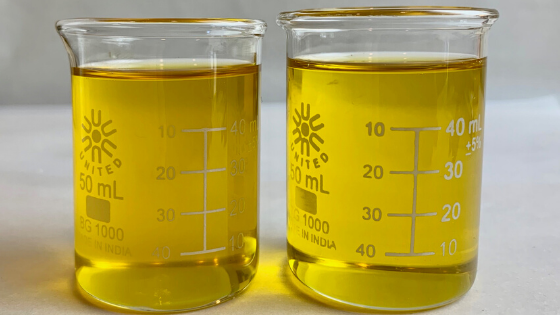
This oil has a neutral scent that I would describe as slightly herbal and I find it absorbs well into the skin without leaving an oily feeling.
Naturally Exfoliating?
Hibiscus seed oil is reported as ‘exfoliating’ in various blogs and studies I found on line. And it does have its own feel on the skin. Slightly toning I would describe it. So I wanted to know what was different about this hibiscus oil and discovered that it has a small percentage of Sterculic acid which is rare to find in lipid oils.
Could this unusual fatty acid be the source of the gently and slightly exfoliating properties of the oil? Just by applying it as a light facial oil, it increases cell turnover. The results are subtle, but I find them noticeable over time.
Antioxidants
Hibiscus seed oil is a rich source of plant sterols and other antioxidants. It also contains small amounts of squalene, 15mg per 100g of oil.
As a Skincare Oil
To use hibiscus seed oil as a facial oil, apply a few drops to damp clean skin. Just out of the shower or after cleansing when the skin is still damp is ideal. Another way to add the water element is by dampening the skin with a light hydrosol before applying a facial oil like hibiscus.
You can also use hibiscus seed oil as a body moisturizer and on damp hair and scalp.
Experimenting
Since growing up surrounded by bright red hibiscus flowers, anything hibiscus’ will always be a rich, vibrant red color.
So recently when experimenting using hibiscus seed oil in a melt recipe I wanted to bring that red to what I was working on by using a natural pigment to add color.
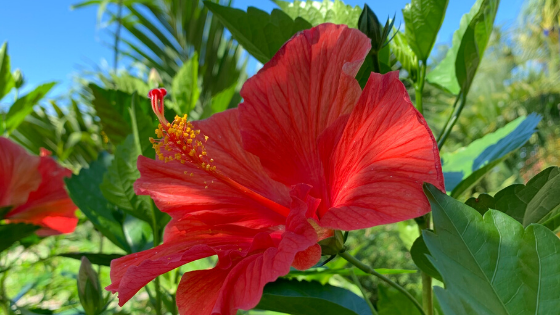
Melts are a solid balm that does not include a wax and are cooled and set in a mold rather than a container. The trick is getting them to set up solid and not melt completely when the temperature changes. They are to melt into the skin but still hold their form.
My experiment was somewhat successful. Here’s the formula I ended up with.
30% Kokum butter
26% Illipe butter
15% Kpangnan butter (substitute: mango butter)
12% Cocoa butter
15% Hibiscus seed oil
2% Alkanet infusion
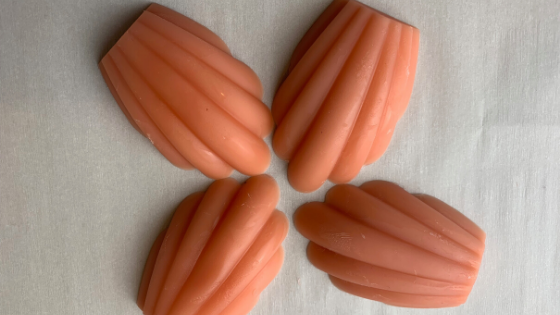
This is just one example of what is possible and the formula that held up best from my experiment. It felt solid at 74° F room temperature and still melted on the skin.
NOTE: Some of these butters are newer on the market, but I find many are increasingly available. Here is a list of suppliers around the world that I’ve gathered over the years.
I haven’t personally purchased from all of them based on location and shipping but I have purchased from many in the US. And, if you have a favorite supplier that you would like to add to this list, let me know and I will add it to this list.
To Make the Alkanet Infusion
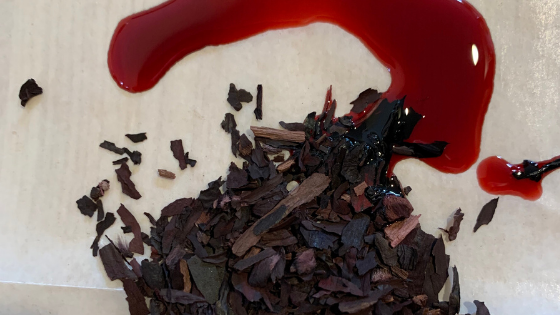
Fill a mason jar with 1/3 chipped or pieces of alkanet root. Fill the jar with a liquid oil. I used sesame seed oil for this one. Allow the alkanet root to infuse for several weeks. Over time the oil will take on a deep red color.
What are you experimenting with these days? Leave a comment below.

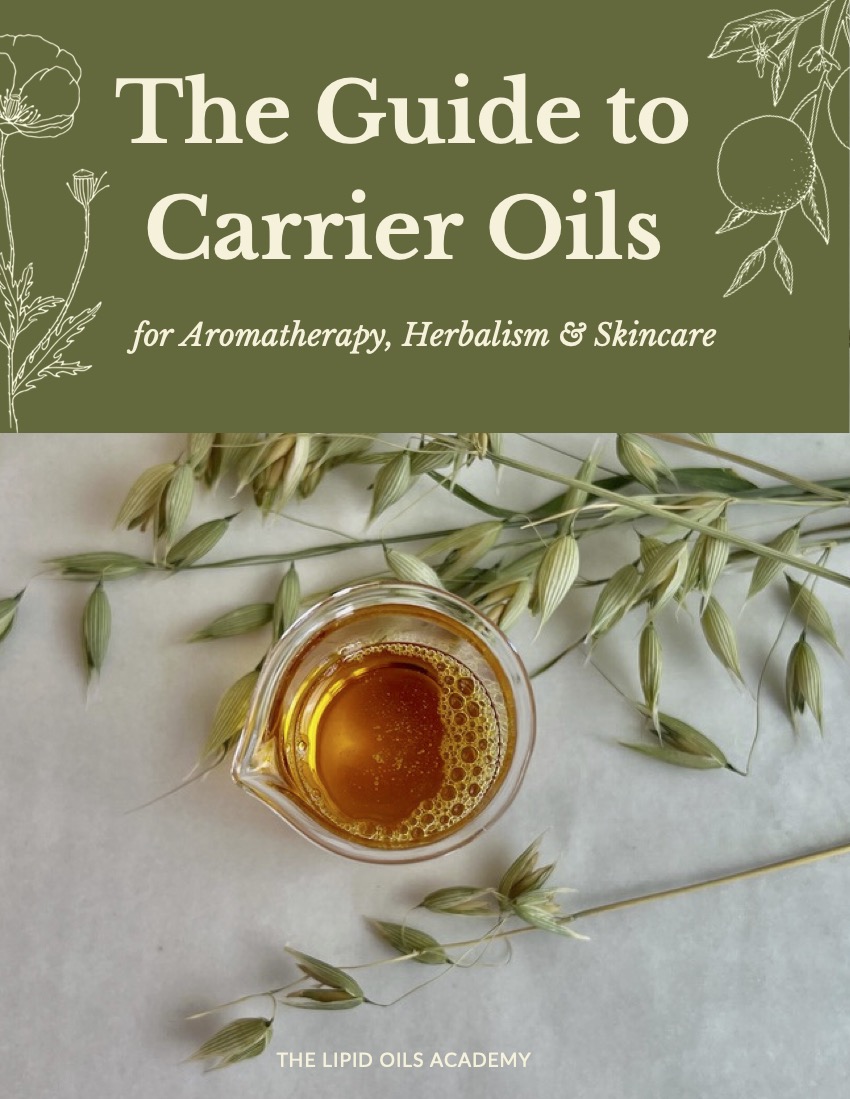
Hello, what is the melt recipe for? Is that a melt-able body lotion butter? How does it work? Never heard of it
Glad to read that Hibiscus oil has a neutral scent. Am always looking for that as one priority—in a list of them!—before ordering. Maybe due to its ‘exfoliating’ property it would be great in a formula for facial scrub?
Thank you for this article. I received your Hibiscus Seed oil and it’s absolutely lovely. Looking forward to using it as well as the Watermelon Seed oil. I’ve used the Moringa. Precious oil. Loving the feel.
Would it be wise to make an infusion using the hibiscus flower? And what oil should I use?
Yes you could do that but it is not the same thing as pressing the lipid oils from hibiscus seeds. An infusion of hibiscus flowers would have the properties of the base oil with the infused properties from the petals.
Susan, I’m about to make the alkanet infusion but wow, this alkanet really stinks! Will it calm down? Is this normal? Also, what about using sunflower oil instead of sesame?
Hmmm, I have alkanet with no scent so not sure – if you haven’t infused it yet it may be fine in oil. besides to color a combination you need very little so scent will be diffused. Sunflower is a fine infusing oil.
Susan, are the Hibiscus seeds available if one wants to extract the oil at home – just as an experiment.
Sorry I don’t know where you could purchase seeds. That would be fun though!
I’m playing with a microderm abrasion paste. I think that hibiscus oil since it’s exfoliating would be a great addition
I think I will love this. I am very into Jaimica (a cranberry-colored hibiscus flower) tea. I am experimenting with Irish moss seaweed as a thickening and skincare agent. I am wondering if you have andy suggestions of Irish sea moss use in conjunction with your hibiscus oil and do you know which type of hibiscus flower is used in this oil?
can other hibiscus varieties be used besides the red?
Actually the type of hibiscus isn’t that red one at all but called roselle – I’ve only seed photographs of it. It does grow in places like Florida and the south.
The roselle variety is the one that is used for jamaica tea. Which is a Spanish word (pronounced Hi my ka) and used for the tea or drink popular in Latin American countries especially Mexico. The health properties are amazing.
Hi Carol, yes it is the roselle variety that the seed oil is pressed from.
I’m playing with a microderm abrasion paste. I think that hibiscus oil since it’s exfoliating would be a great addition
So have you tried or are you willing to try Iris sea moss which also has amazing health properties both internal and external.
Irish Sea moss would be a gel in formulation I think. I am only working with lipids for now.
Do you think the qualities of hibiscus seed oil could be beneficial on oily/acne prone skin types?
Sure give it a try – we are all too individual to say for sure.
These melts look lovely. I would love to know what supplier were you able to source the hibiscus seed oil from? Thank you in advance!
Sure 3Cay G carries it and it appears to be in stock https://www.3cayg.com/hibiscus-seed-oil/
Thank you! 🙂